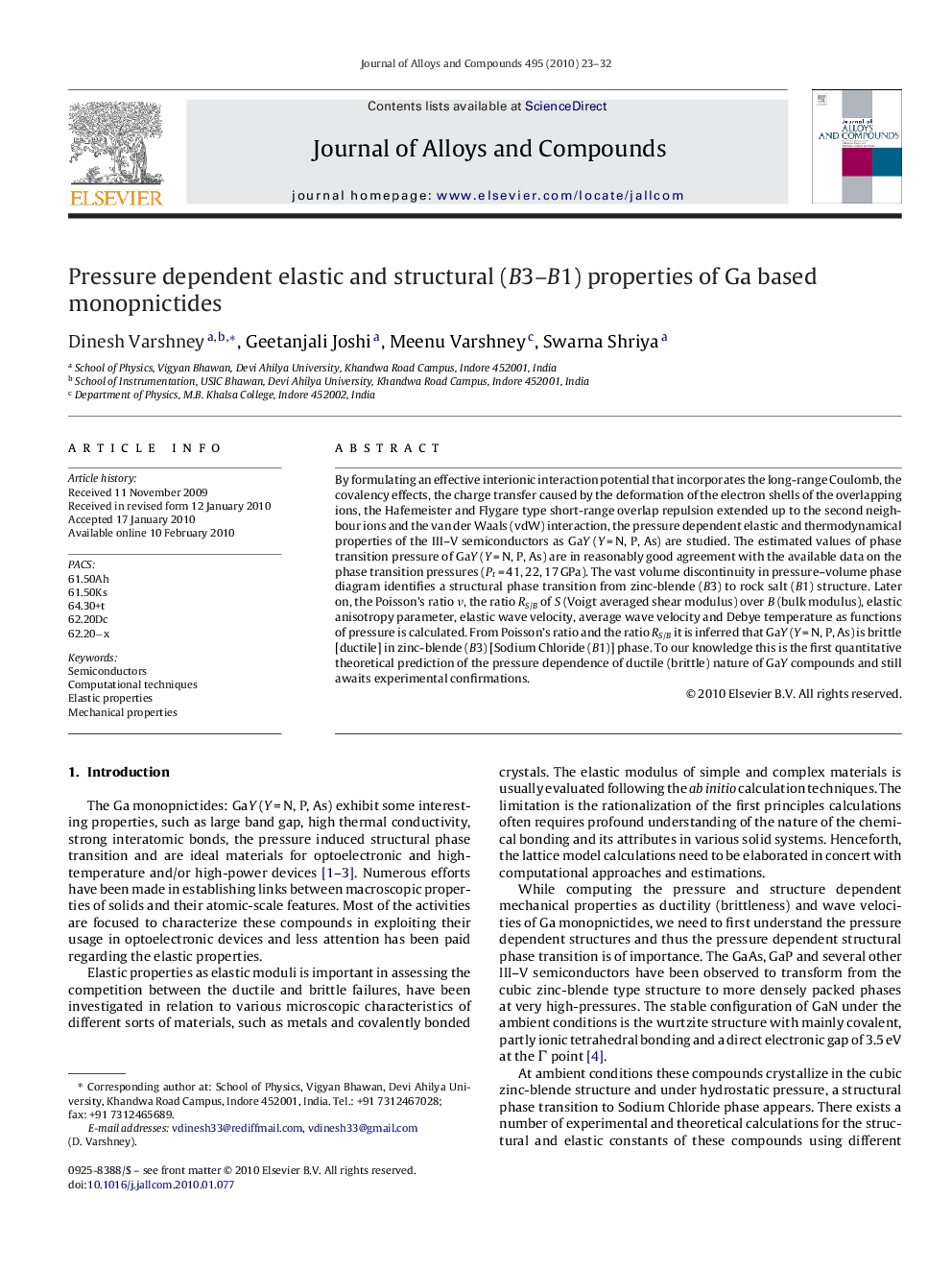| Article ID | Journal | Published Year | Pages | File Type |
|---|---|---|---|---|
| 1619316 | Journal of Alloys and Compounds | 2010 | 10 Pages |
By formulating an effective interionic interaction potential that incorporates the long-range Coulomb, the covalency effects, the charge transfer caused by the deformation of the electron shells of the overlapping ions, the Hafemeister and Flygare type short-range overlap repulsion extended up to the second neighbour ions and the van der Waals (vdW) interaction, the pressure dependent elastic and thermodynamical properties of the III–V semiconductors as GaY (Y = N, P, As) are studied. The estimated values of phase transition pressure of GaY (Y = N, P, As) are in reasonably good agreement with the available data on the phase transition pressures (Pt = 41, 22, 17 GPa). The vast volume discontinuity in pressure–volume phase diagram identifies a structural phase transition from zinc-blende (B3) to rock salt (B1) structure. Later on, the Poisson's ratio ν, the ratio RS/B of S (Voigt averaged shear modulus) over B (bulk modulus), elastic anisotropy parameter, elastic wave velocity, average wave velocity and Debye temperature as functions of pressure is calculated. From Poisson's ratio and the ratio RS/B it is inferred that GaY (Y = N, P, As) is brittle [ductile] in zinc-blende (B3) [Sodium Chloride (B1)] phase. To our knowledge this is the first quantitative theoretical prediction of the pressure dependence of ductile (brittle) nature of GaY compounds and still awaits experimental confirmations.
